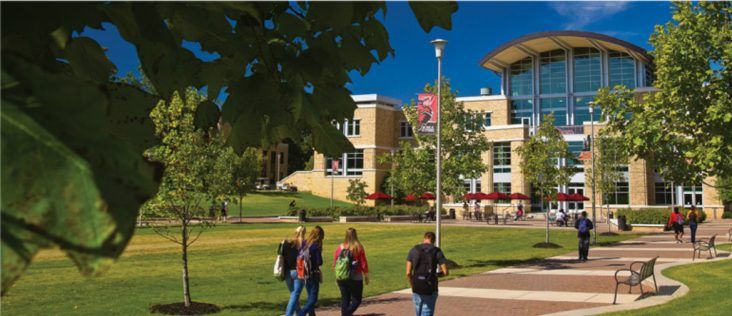Arkansas State University’s fall enrollment virtually the same as in 2019
by September 13, 2020 3:54 pm 756 views

Arkansas State University’s student roster numbers for the fall of 2020 are virtually the same as in 2019 despite the threat of COVID-19. The school reported to the Arkansas Division of Higher Education it has 13,843 students, a 0.3% drop from the 13,891 students it started with last fall. Students are counted 11 days after the semester opens.
ASU began the fall 2020 semester Aug. 25, placing its 11th day slightly later than most universities in the state.
“It is remarkable to see that our overall enrollment is close to what we had last fall in spite of the great challenges we are facing through the coronavirus pandemic,” Chancellor Kelly Damphousse said. “At the same time, we also recognize that our enrollment mix will ultimately determine the impact of enrollment on our budget.”
Among the 10 four-year public universities in Arkansas, the average decline in enrollment this fall is 2.1%, while community colleges expereinced a 7.1% decline in enrollment this year.
ASU set a new record for first-year student retention as 79.0% of the fall 2019 first-year students are enrolled in their second year of classes this fall. This breaks the previous mark of 76.6% two years ago.
“The efforts made by our faculty and academic support teams to identify how we can assist our first-year students were outstanding this past year,” Damphousse said. “Consider that not only were these students in their first year of college, they were also caught up in the rapid shift to online instruction last spring due to the pandemic. Congratulations to Dr. Jill Simons, our Chancellor’s Commission on Completion, and our Pack Support team for achieving a record retention with our first-year students.”
This year’s on-campus freshman class is 1,264, a decline of 85 students from last year.
“I don’t think that we will ever be able to measure the impact of the global pandemic on the size of our incoming class of 2024. It was certainly challenging for our admissions team to recruit students after schools across the state closed down in March. Anecdotally, we know that many prospective students preferred to stay closer to home this fall, to attend college 100% online, or to not attend college at all,” Damphousse said.
The school’s online enrollment rose to new heights for this fall, with a total of 4,638 students enrolled for the first fall session. This included a record 996 undergraduate students enrolled in 100% online programs, an increase of 28.2% over last year.
“We continue to be the leader in online instruction for our state, and as we begin our second decade of offering 100% online graduate and undergraduate programs, we are exploring new pathways to success for students who prefer learning in an online environment,” Damphousse said. “We are seeing an increase in the number of working adults, for example, who are entering our undergraduate online programs to complete a degree that they started elsewhere. Without our online program, most of these students would not be able to earn a four-year degree.”
Campus Queretaro is welcoming a record 255 new first-year students into its program this fall, with a total of 737 students enrolled. This is the fourth year of operations for A-State CQ.
“Compared to similar international campuses led by other universities, this enrollment growth in such a short time period is very positive, and suggests that students believe Campus Queretaro is a valuable opportunity,” said Damphousse. “I am looking forward to holding our first graduation ceremonies in Queretaro next May.”
Another enrollment increase for ASU was among concurrent high school students, up 2.2% to 728 students, bolstered in part by the school’s collaboration with the governor’s office initiative to provide computer coding classes for high school students.
Compared to fall 2019, ASU experienced significant reductions in transfer students (-21%) and international students (-19%) this fall.
“The typical transfer student comes to A-State from a community college. The pandemic reduced recruiting effectiveness there, and we are also seeing a decline in attendance for the community college population statewide,” said Damphousse. “International student enrollment is struggling across the country as those students face difficulties in reaching the United States due to the global pandemic.”
